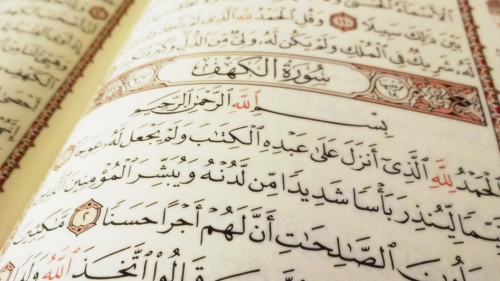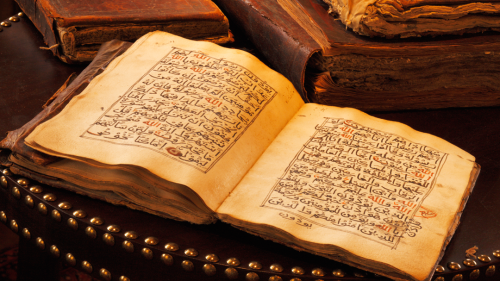The Qur’an, Sunnah and Architectural Creativity

Concerning the realm of architecture, the role of the Qur’an and the Prophet’s Sunnah is to provide Muslims with an inspired outlook on life, in general, and on those issues that are pertinent to architecture, in particular, and with some broad rules of morality and guidelines of proper conduct which may, or may not, be directly related to architecture.
Upon such a divine point of view and general principles and guidelines Muslims are invited to establish architectural theories, systems and styles that are consistent with both their religious preferences and the requirements of their diverse eras, geographic regions, cultures and other practical needs and conditions. Islamic architecture is a symbiosis between permanence -- which is represented by the constant innate inclinations of essential human nature and the heavenly guiding principles and regulations meant for it -- and impermanence which is necessitated and controlled by the time and space factors. It is the latter that changes, while the former is abiding and remains unchanged.
Indeed, this is the thrust of Islamic architecture’s powerful identity. Due to it, Islamic architecture was able to rise above the precincts of the geographic and cultural contexts wherein it was planted. Due to it, furthermore, Islamic architecture was able to transcend the restrictions of the historical moments during which it was fashioned, outliving the generations of its designers, engineers, craftsmen and users.
Islamic architecture with the ideals it personifies dominates its people and their thinking patterns. It is never the case that the people subjugate to their wishes and then control the world of Islamic architecture. If however that happens, that will spell a dire degeneration of Islamic architecture which might lead to its eventual death.
Islamic architecture likewise enlightens and inspires. Some of its facets can be inspired by a fine and purified vision, philosophy and thought approved by the Islamic consciousness, which are then fully Islamized and made subservient to the same Islamic consciousness.
However, there is no segment of Islamic architecture that can be inspired by such ideas and attitudes as stem from the sources that are contradictory to the source whence Islamic architecture originates, that is, revelation in the form of the Qur’an and Sunnah of Prophet Muhammad (pbuh). Such would be a blasphemous act and an act of gross injustice towards the Muslim users of the particular segments of architecture.
Islamic architecture declined, struggling to retain its conspicuous identity, only when its two defining poles were bartered, that is, when the sacred in Islamic architecture became compromised and was regarded as a transient and man-generated legacy, and when either a building system or a style of an age or a geographic region became excessively venerated and was regarded as a sole inspiration and guidance, or when a complete detachment from the religion of Islam and its civilizational outlook occurred and an inspiration and guidance were sought from foreign sources.
It follows that successfully reviving the real meaning and vitality of Islamic architecture depends on properly conceptualizing its basic notions and its conceptual framework, which then should be followed by finding and actualizing appropriate operating strategies and methods for it.
It is on account of this that the first role of the Qur’an and Sunnah as the sources and foundation of Islamic architecture is to afford a perfect guidance on how Muslims are to perceive creating, using and possessing architecture. That is an integral part of the total Islamic worldview and belief system. The two holy sources also educate on the importance of architecture and its purpose in life.
The goals of architecture are closely linked to man’s life purpose and goals, and are treated as such. The two in fact complement each other. Thus, a Muslim architect should perceive himself firstly as a servant of God, then as an architect. A Muslim architect should see his profession as no more than a means towards realizing his noble terrestrial mission as a vicegerent and servant of his Creator and Master. In general, the purpose and goal of every Muslim’s professional life cannot deviate from the purpose and goal of his total existence. Architecture is a form of service to people, the environment and God.
It stands to reason that a conceptual dimension of architecture, which determines and shapes its physical and artistic dimensions, is perhaps most critical in evolving an architectural style. This is so because humans are not the only creatures that build. Many a creature that we classify low down the hierarchy of the animal kingdom, such as bees and ants, build elaborate structures. However, it has been suggested that it is awareness, thinking and imagination that single out humans as superior to other animals in architectural output. While the rest of creation acts on the environment instinctively with no reasoning or training -- as preordained by God, the Creator of the universe -- humans do the same willingly and at their own discretion.
Since their actions are preceded by thinking, rationalizing and beliefs, human beings clearly demonstrate through acts of building -- and every other engagement of theirs -- their philosophy of and outlook on life and its multitiered reality. The relationship between the two -- that is, people’s outlook on life and the disposition of their actions, including building -- is causal, the former always being the cause of the latter. No sooner does a paradigm shift occur in one’s worldview, no matter how (in)significant, than a corresponding change ensues in the very essence and character of one’s performances, thus revealing and immortalizing one’s actual relationship with his own self, his peers, other creatures and, of course, with his Creator and Lord.
The Qur’an and Sunnah afford sets of broad and general values and principles that are central to the body of architecture: from the conceptual and abstract aspects, to the practical and tangible aspects concerning the functions of various components of Islamic architecture.
If one expects to find either in the Qur’an or Sunnah a concrete formula for designing a dwelling or a mosque, for example, one is then seriously misguided. Equally misguided is he who asserts that the architecture of Muslims has nothing to do with the beliefs and value system of Islam, and that the two should be kept clear of each other.
The Qur’an and Sunnah with their vision of, and approach to, architecture function as the everlasting sources of inspiration and catalysts for matchless ingenuity, in addition to the rest of conventional sources and catalysts needed by architects. And the two notions: inspiration and ingenuity, are fundamental to every successful architectural story. It is even argued that the wellbeing of civilizations depends on how creatively and resourcefully they respond to recurring challenges confronting them.
As a few examples, the Qur’an and Sunnah do not speak about how to plan and design house entrances and windows, but they speak about the issues and activities that are pertinent to the subject matter; nor do they address how to organize inner spaces inside a house, but they speak about scores of issues that are related to that particular topic; nor do they speak about the ways mosques are to be planned and designed, but they speak about mosque activities and various other matters that are relevant to the mosque and its multiple functions as community centers, so they should be duly considered when planning, designing and building mosques; nor do they speak about how to make buildings sustainable and environment friendly, but they are very much eloquent about the significance and purpose of the environment and our many duties towards it, so much so that one gets a feeling that Islam is truly a religion of environmental protection and that Prophet Muhammad (pbuh) was the first de facto environmentalist; nor do they speak about how to make buildings perfectly safe, secure and clean, but they are categorical in establishing safety, security and cleanliness as foremost principles of Islam and, at the same time, as the most important standards of living.
Without doubt, those broad and general Islamic values and tenets, which lie at the core of architecture, can greatly enlighten, enrich and inspire Muslim designers and architects. They can widen their not only architectural, but also spiritual and intellectual horizons and vistas. By subscribing to them, Muslim designers and architects have nothing to lose; they can only gain multiple benefits.
Those were only some examples where the contents of the Qur’an and Sunnah can function as the sources of motivation and catalysts for creativity. That however is to be seen just as a starting point from where a Muslim architect sets off to express himself architecturally and produce such architectural concepts and forms as he deems most suitable insofar as his spiritual proclivities and life interests are concerned, using then the same divine guidance as a point of reference for acceptance and authorization whenever an architectural accomplishment is made. This hierarchical organization and order in Islamic architecture render it ever alive and applicable. It also signifies a divine acknowledgment of the talent and potential inherent in man -- God’s vicegerent on earth -- which, after all, are God-given.
Islam is a complete way of life. Its values and teachings are universal and timeless. Islamic architecture is universal and permanent too, in that the philosophy that it embodies is the Islamic one. However, such is the nature of Islamic architecture that it is receptive to both advances in science and technology, and the dictates of people’s living conditions.
It is an imperative that Muslim architects always remember this verity while trying to revive and sustain the phenomenon of Islamic architecture, both as a concept and sensory reality.
In so doing, Muslim architects are bidden to, firstly, identify the general guidelines and principles of the Qur’an and Sunnah pertaining to the enterprise of building. Next, they should be fully aware of the implications of the dilemmas and challenges their time and diverse regions in which they live entail. They cannot be trapped in a historical episode, overly romanticizing it and attempting to emulate the architectural solutions the Muslims of that particular period successfully evolved. If something was the norm during a period and in a particular ecological and socio-economic setting, such by no means can be the same in every subsequent period and in different ecological and socio-economic settings.
Technological advancements rapidly change, demands of different eras fluctuate, even under the same ecological conditions. Climate exigencies ought to be painstakingly heeded, too. And lastly, human psychology also changes with the changes in the time and space factors, posing a number of exigencies of its own. No architectural plan and design, which served as a solution for an age and a place, can be simply “parachuted” to another age and place without properly modulating it to its rigorous environmental and socio-cultural requirements. To do that is to betray the dynamic spirit of both the common sense and the perpetual message of the Qur’an and Sunnah. Blind and ignorant imitations and following, even in sheer religious matters, are categorically rebuked by Islam.
While taking hold of the general values and teachings of the Qur’an and Sunnah with reference to creating an Islamic architecture, on the one hand, and while studying the needs of different times and situations so that the former can be accurately understood and applied, on the other, Muslim designers and architects, in reality, perform a degree of ijtihad, i.e., forming an independent opinion or judgment within the framework of an available text from either the Qur’an or Sunnah, or from both. In doing so, if one excels, one receives two rewards from God, but if one for whatever reason, fails to deliver, after he had tried his best, one is bound to receive one reward from God, as explained by the Prophet (pbuh) in one of his traditions (Sahih al-Bukhari).
Based on that tradition, in no way can a serious, enlightened, accountable and willing person be a loser as far as the execution of matters ordained by God is concerned. Verily, this divine assurance should serve to Muslim architects and designers as a starting point to look carefully and critically at the state of Muslim architecture today and how buildings in the Muslim world are planned and designed, as well as to start contemplating the prospects of finding adequate and long-term solutions to the existing problems.
The Qur’an and Sunnah, apart from being a divine guidance, also serve as a powerful restraining force whenever people develop a tendency to lose their way and start using architecture both as a means of and field for committing certain evil practices.
Since architecture is a powerful and effective medium for expressing ideas, status, reputation, personal and social achievements, etc., it has a potential to be both abused and misused at the hands of some of its designers, patrons, builders and users, proportionately to the extent of their deviational tendencies. Hence, in Islam, such wrongdoings as wasting, extravagance, showing off, arrogance, ingratitude, greed, jealousy, corruption, environmental destruction, discriminating against people and dishonest competition -- all of which can easily find a breeding ground in an erroneous architectural vision and style -- are regarded as grave sins. They can seriously injure the spiritual wellbeing of a person and that of a whole community. So serious are those vices that they have the potential to deny their perpetrators God’s grace in both worlds and His Paradise in the Hereafter, plunging them into the abyss of Hellfire instead.
As a consequence, Muslim architects are to be an exemplary group responsible towards themselves, their profession, society, culture and religion. This is irrespective of whether they are governed by a code of ethics and professional conduct in places where they work, or not. Their code of moral values and professional demeanor is enshrined forever in the Qur’an and the Prophet’s Sunnah. Islamic general ethics, which accounts for a permanent system of values that guide our choices and actions and determine the purpose and course of our lives, should constitute the core of different codes of ethics and professional conduct that different architectural companies and establishments may introduce for themselves. They need to ensure that Muslim architects are dedicated to the highest standards of professionalism, integrity and competence.
It follows that Islamic architectural education should seriously address the matter. Islamic education, generally, is not the one that produces greedy, materialistic and egocentric professionals who readily dispense with moral principles both in their professional and private lives. Islamic education, on the contrary, produces capable, but ethical and accountable, professionals who are no less skilled and competent than their peers who come from conventional secular educational systems. Islamic education produces not only good professionals, but also good men and women, i.e., good citizens. Whereas the latter is always a guarantee of the former, the opposite is not always the case.
On the whole, the impact of architecture and architects on their surroundings is immense. Thus, if, for example, medical education begins in virtually all medical educational environments with taking an oath where the students’ responsibility for caring for people’s wellbeing and health, and where the serious implications of their actions for the patient, the patient’s family and so, the community, are greatly accentuated -- why shouldn’t “architectural education establish the same understanding of the architect’s responsibilities to society, building users and clients? Do not architects have similar ethical and professional demands placed on themselves for the health, safety, and welfare of the public, especially given the impact that design choices impose on individuals, communities and the global citizenry? Environmental stability, the wise use of land, the design of public spaces, energy conservation, community improvement, resource allocation, adaptive reuse, building function, aesthetic delight, air quality, safety and security, and so many more of the issues that we address in the course of our professional lives must be approached with an inherent understanding that being an architect carries immense responsibility. Our education must be founded on such an understanding” (Steidl, www.di.net, accessed September 24, 2014).
According to the message and guidance of the Qur’an and Sunnah, therefore, which is to be mirrored in Islamic architectural education, knowledge without righteousness is of no use and is a very dangerous and deceiving proposition. Likewise, righteousness without knowledge is deficient. The two must be integrated operating as such as a foundation of people’s lives. Such a philosophical framework will stimulate people’s approach to life, actions and relationships.
The inappropriateness of a one-sided approach to life, and in this case to education which is the foundation and lifeblood of the former, as well as the opposite, i.e., the appropriateness of an integrated approach to life, is the message of the following Qur’anic verses: “There are men who say: ‘Our Lord! Give us (Your bounties) in this world’, but they will have no portion in the Hereafter. And there are men who say: ‘Our Lord! Give us good in this world and good in the Hereafter, and defend us from the torment of the Fire!’” (al-Baqarah, 200-201).
A knowledge devoid of integrity and virtue, and the perils of such a knowledge, the Prophet (pbuh) surely had in mind when he implored God to guard him against a knowledge that brings no benefit (Sunan Ibn Majah).

















